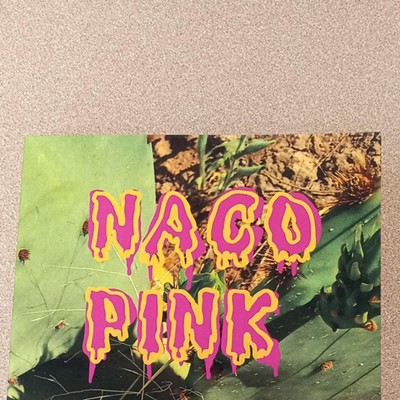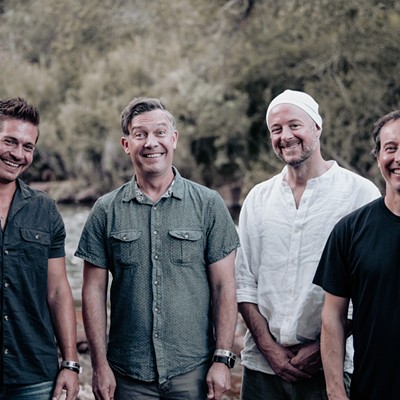It's the good guys versus the bad guys. In some cases, like in the melodrama-style of theater we see at the Gaslight Theatre, it's very easy to distinguish who's who and which is which. In life, unfortunately, it doesn't always work that way.
When the Great American Playhouse in Oro Valley closed its doors in November, it was a sad day for the owners, staff and actors, as well as Tucson's theater landscape as a whole. Opening a theater, particularly a for-profit one, is always a gamble, and to make a theater profitable offers an Everest-type mountain to conquer.
Most theaters in town are not-for-profit, meaning their chief goal is to make good theater as sort of a public service—a community enriching enterprise. They are tax-exempt, generally work with small budgets, don't pay their actors much (if anything) and struggle to break even. There are really fewer than a handful of for-profit theaters here. Broadway in Tucson, which brings outside shows to town, and the Gaslight Theater are for-profit businesses, and the GAP was a for-profit theater as well.
Obviously, GAP wasn't profitable enough, though, and they couldn't find a big enough audience to support their endeavors. On top of that, according to Nick Seivert (one of the original investors and full-time actors there), they were brought down by targeted sabotage and harassment.
Initially, part-owner and executive director of GAP Nancy LaViola didn't respond after the closure, though an e-mail from Seivert stated that she had asked him to.
"To watch the business we built be destroyed by another theatre owner in this town is heartbreaking," he said, referring to Tony Terry, owner of the Gaslight.
LaViola, Sean MacArthur and Seivert, the three who founded and ran GAP, used to work for Terry at the Gaslight. There's no doubt that Gaslight has become a Tucson institution in 38 years, producing what Terry calls musical melodrama theater. Their shows are consistently done well, entertaining thousands of Tucsonans and visitors alike every year.
In their tenure there, LaViola was general manager, and Seivert and MacArthur were performers. However, quite a few years ago there was a parting of ways—and it wasn't an amicable one.
In 2013, the three opened the GAP in Oro Valley. An early visit to the young theatre seemed to show an attempt to replicate the Gaslight experience, and it was impossible not to notice. There were tables with red-checkered tablecloths, baskets of popcorn on each. A menu of pizza, sandwiches and ice cream desserts sat on each table. There was live music provided by a pianist. The main attraction was a musical melodrama, one that Seivert had written, followed by an "olio" or variety show. Unmistakably, the evening followed the same formula in performing and dining as at the Gaslight.
When Terry got wind of what was happening, he was angry. He felt they had stolen his baby.
"They stole everything. My concept for their shows, the layout, the seating chart—things that we had been developing for almost four decades. To steal someone's concept and call it your own and not change it—it's hard to imagine they were OK with that," Terry says. "I've got no problem with competition. Had they opened a different kind of theater, I would have been on board supporting it like I do any other theater in town."
Seivert sees it differently. In his e-mail, he called Terry a "megalomaniacal tyrant with the resources to gobble up all of the available audience and the rest of the theatres be damned."
"His dirty tricks started early, even before we opened our doors at the GAP, and they cut deep. It got ugly at times," he said, adding that Terry's behavior was like "school-yard bully tactics." He cited examples like "cease-and-desist demands, actively recruiting our actors and tech staff, threatening emails, slander, lawyer demands, private investigators..."
He claimed that although what Terry did was "despicable and his harassment relentless," if you took him out of the equation, you'd still find a Playhouse that was struggling to build audience.
"But we were trending up," he said, "Like a business that just needed a push over the hump, not a business going downhill."
In response, Terry admits: "Yes, I did consult a lawyer because [Seivert and MacArthur] had a do not compete clause in their contracts with me, and cease and desist orders were issued. But the lawyer told me that it would cost at least $40,000 to pursue this with no guarantee of a favorable outcome. So I didn't pursue it."
Terry seemed incredulous about Seivert's other claims. He denied that he actively recruited GAP's performers or other personnel, and he says he had never hired a private investigator. He called Seivert's claims "ludicrous." Terry said he had heard that they had been struggling since January of this year. He also said that it was his understanding that the GAP hadn't paid their rent in 18 months, which was what the Arizona Daily Star reported in an article on Nov. 11 about the GAP's closing. Besides, Terry asked, how could he prevent them from finding paying customers?
Seivert claimed that they had paid their rent every month, and he claimed that new landlords would not negotiate in good faith with the GAP because they had an agreement with Terry to take over the space on Dec. 1.
Terry flatly denies this. He says he is looking at the space now, as are several other groups, after being contacted by NAI Horizon (the leasing company of the Rancho Vistoso Center). Terry maintains that he has never had, nor does he currently have, an agreement with NAI Horizon.
Talk about melodrama. While several involved in either theatre offered up experiences, some preferring to remain anonymous, at this point it's better to take in the words of Mike Padilla, who has history with both the GAP and Gaslight.
"Let's just stop this," Padilla says, simply. "Theater folks in this town need each other."








